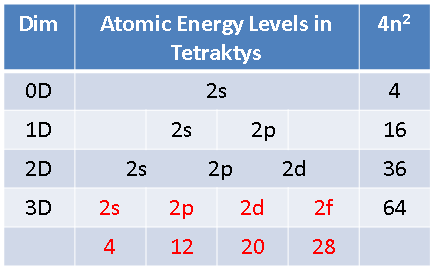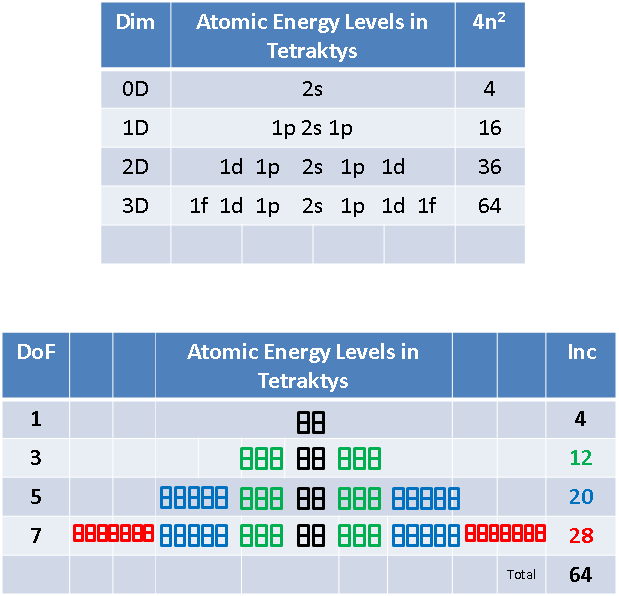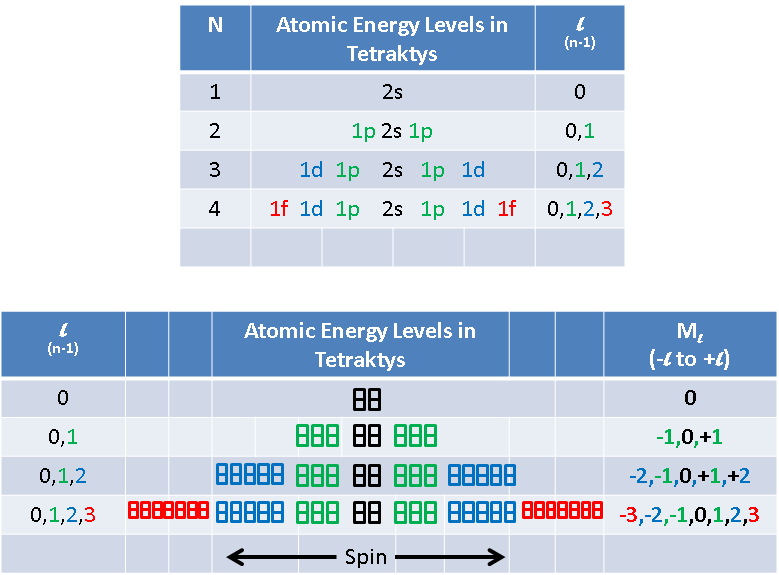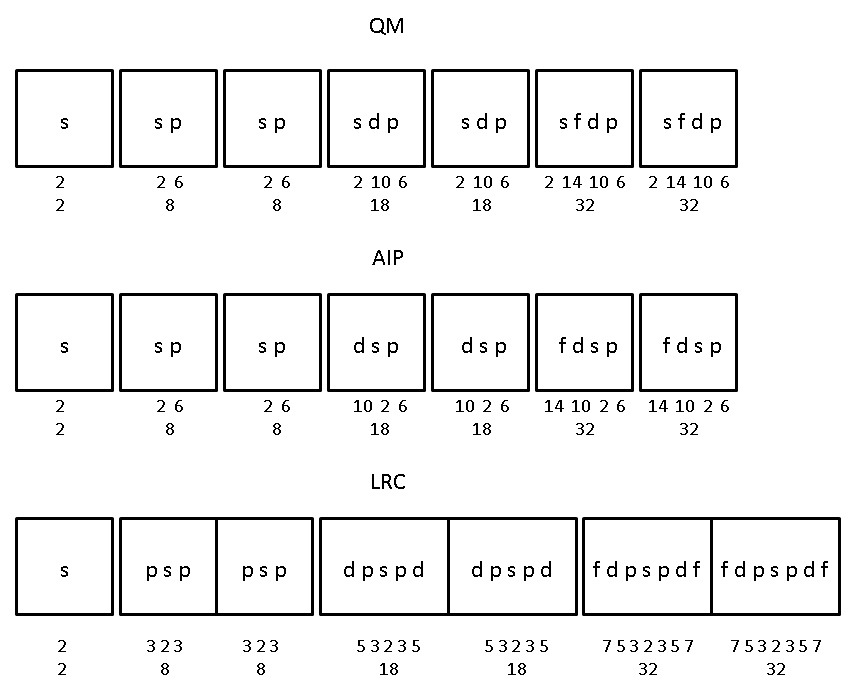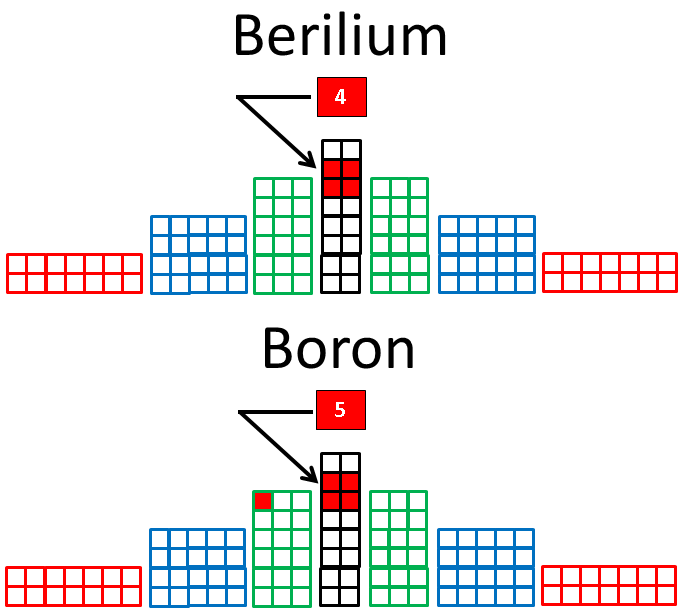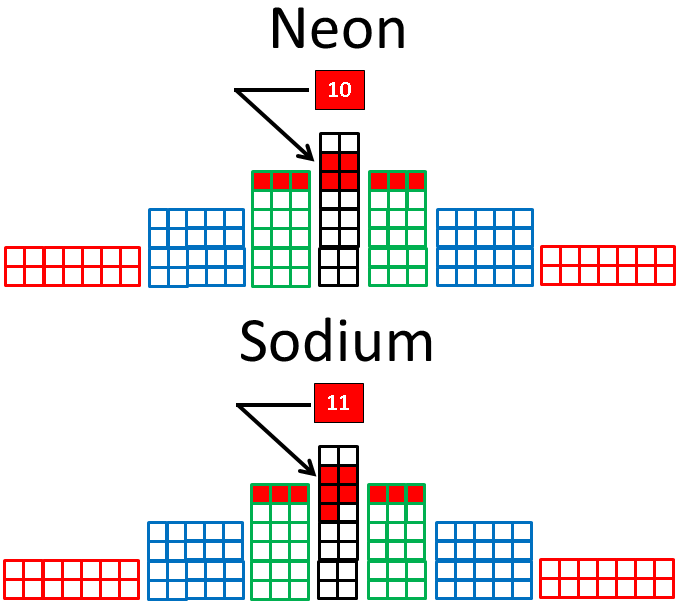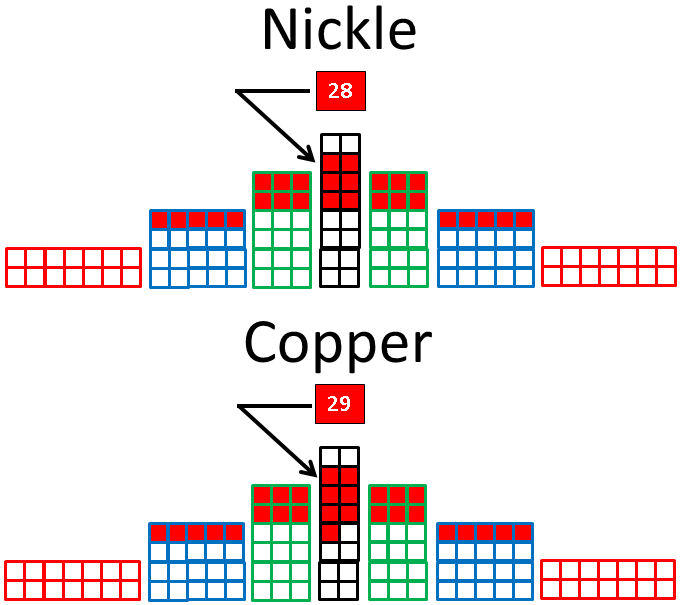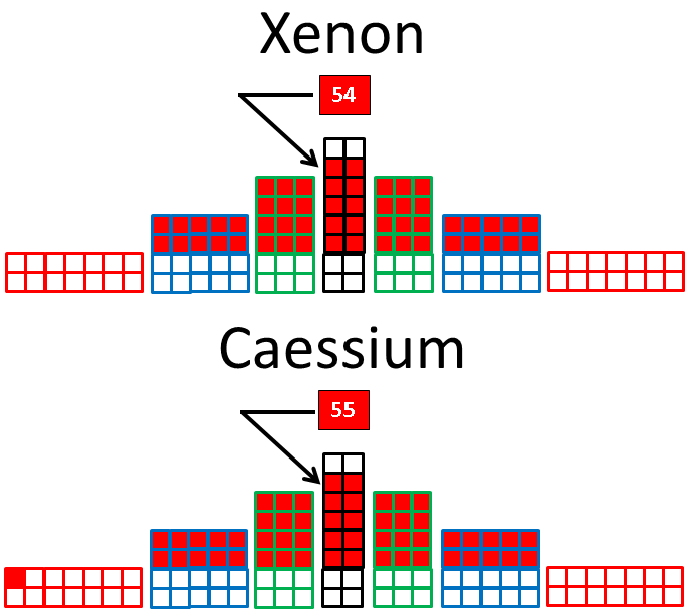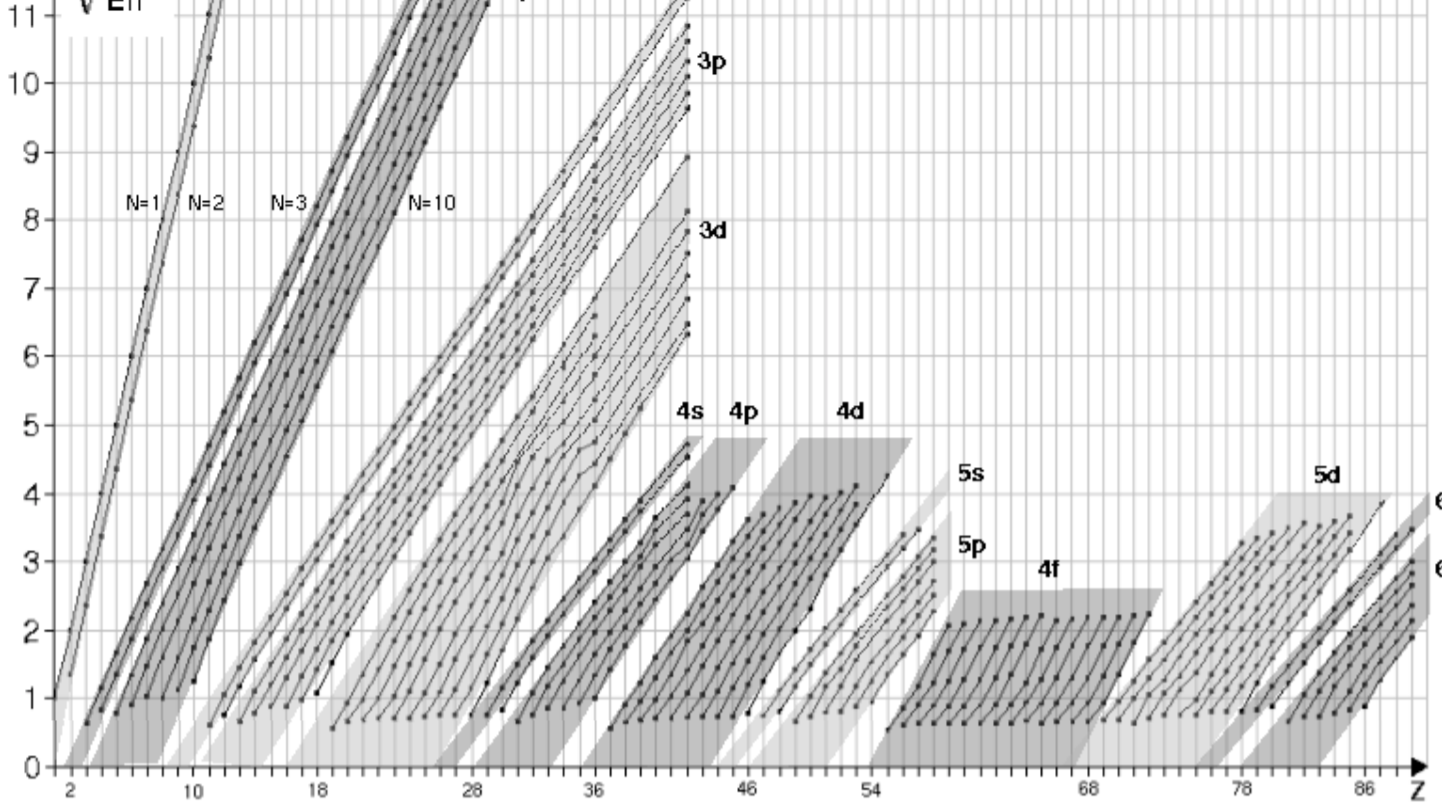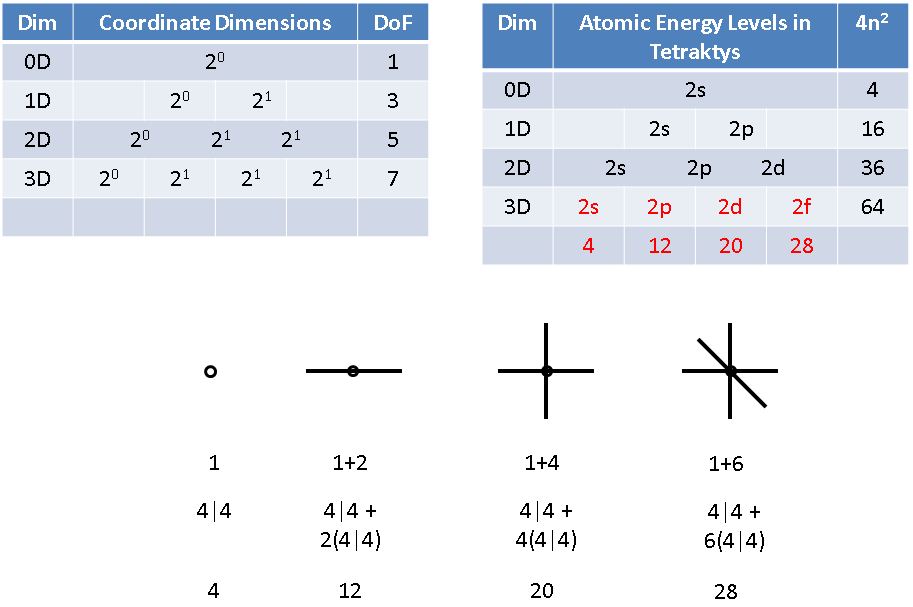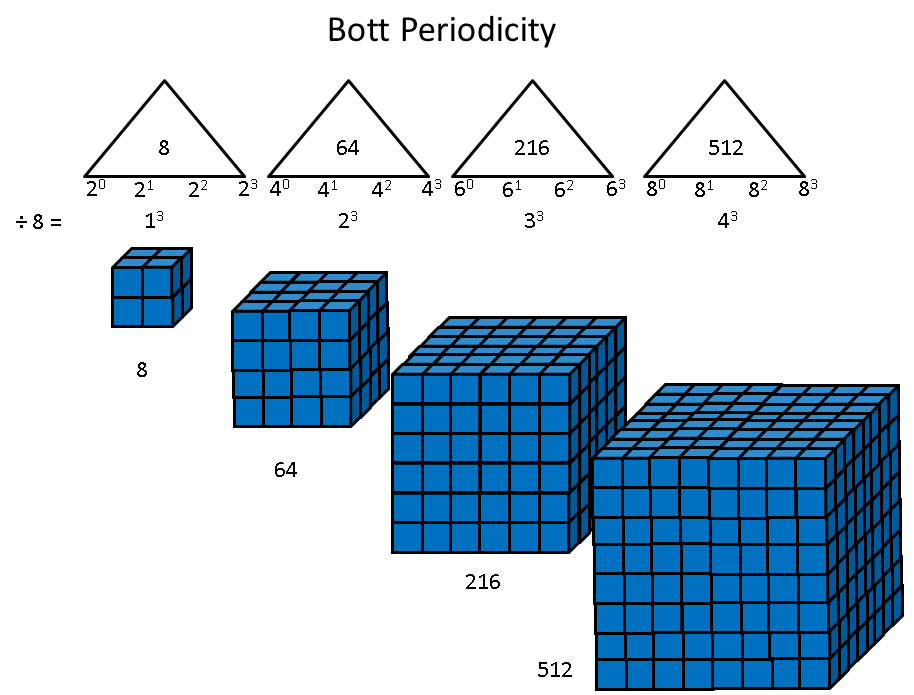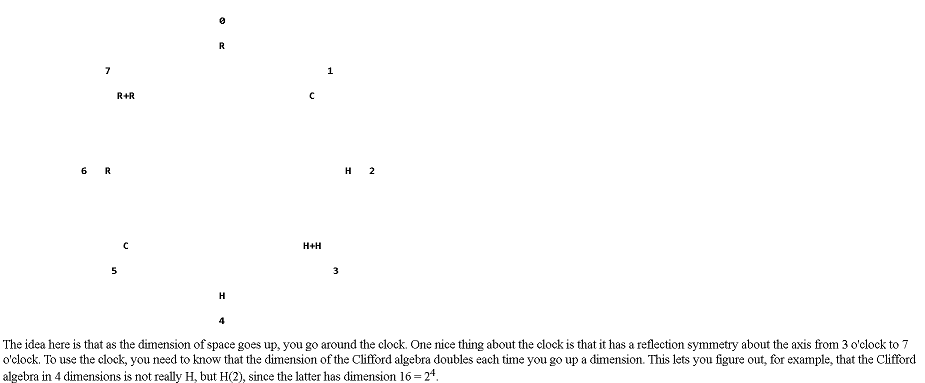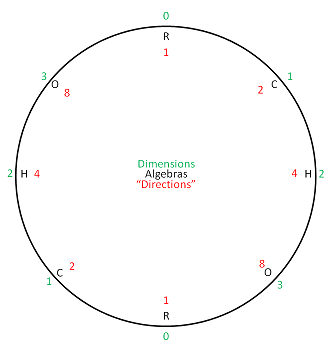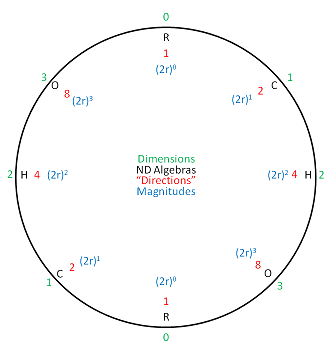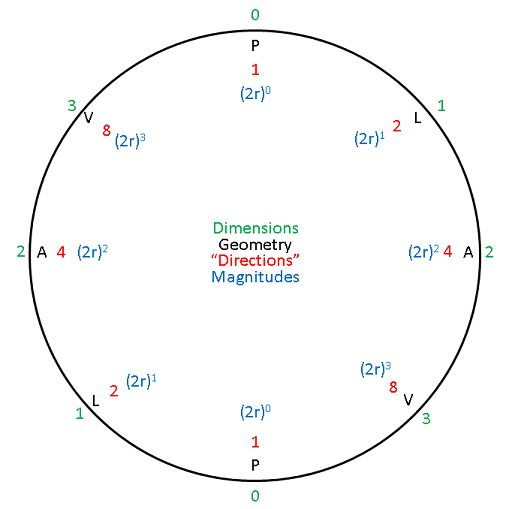Also, instead of trying to cope with the drawing of atomic elements in the circles of the wheel of motion, we can transform the wheel back into a periodic table, as follows:
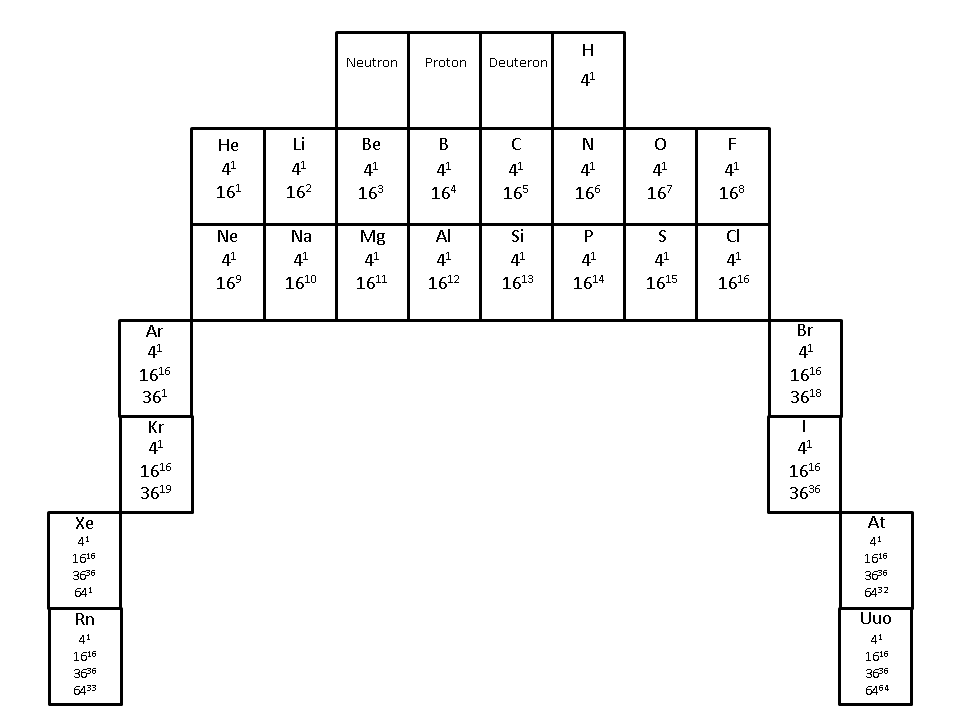
Here the table, like the wheel, is based on four, 4n2 periods, where n = 1, 2, 3 and 4, respectively. Hence, the first row has four entities, the second and third have eight elements each, followed by two rows of 18 and two rows of 32 elements, although only the first and last element in the last four rows are shown, due to space limitations.
Of course, such a table is not of much use to chemists, since the groups of elements with similar chemical properties by column are not maintained. However, for understanding how our RSt generates the periodic elements, it serves better. Note how the number 4, designating the 4-entity row, has a superscript of 1, indicating the one electron of Deuterium. Each succeeding element also contains this electron, as its first electron, adding to it the electrons belonging to each of the next 16-elements of the double 8-row.
When these two rows are filled with 16 additional elements, the 18 elements in each of the next two rows that follow carry the full complement of electrons from the 4-row and the two 8-rows preceding them, designated as the 16, double row. The remaining elements follow suit.
Now, it's helpful to know how the LST treats the development of physical theory, from their perspective of vector motion, energy and momentum, but when it comes to the model of the atom, the scalar motion-based concept has to part ways with the LST concept dramatically, forcing us to think logically and philosophically, in a manner that is as consistent and powerful as Larson's was. It's a terrific challenge, but I'm forging ahead as best I can.
One of the grandest aspects of Larson's RSt, is how he treats the three dimensions of space and time. Electrical force is obviously 1D, magnetic force 2d and gravitational force 3d combinations of motion. I love the way he arrives at these conclusions mathematically, and I love the fact that Xavier Borg independently showed the validity of Larson's space/time dimensions from the formulas of the accepted SI dimensions, alone.
Consequently, the groundwork has been laid to help us discover how the combinations of motion that we have developed so far, which have been so successful in the 1D (electrical) realm, can be extended to the 2d (magnetic) and 3d (gravitational) realms. However, while the electrical aspects, like points on a line, are relatively easy to comprehend, in a reciprocal system, extending the reciprocal idea to 2d circles and 3d spheres is another thing altogether.
I imagine the center point of a space oscillation (unit circle, at -1 on the number line), combining with a time oscillation (unit circle, centered at +1 on the number line), according to our scalar motion equation, and wonder what that would entail. It must be that they have to be inverses of each other. Their product has to be equal to unit motion, and their sum has to be zero, the same as the analogous points, but how does that work?
We've been here before. In 2009, I showed how certain anomalies in the LST periodic table show up in the analysis of ionization potentials by Le Cornec. The late Albert Tarantola had "dismissed" Le Cornec's results, which he called a "second ordering of the elements" based on ionization potentials. He had long preferred a table introduced by Charles Janet, in 1929, which was based on the order of elements by atomic number, which Tarantola designated a "first ordering of the elements."
Both tables differ from the currently accepted periodic table, in the ordering of the elements, because the first ordering is based on atomic number (number of protons) and electron configuration, building up the atoms, proton-electron by proton-electron, and the second ordering is based on the ionization potentials, removing electrons, electron by electron.
Tarantola explains the first ordering: "The order in which the energy levels of atoms is filled is well known: 1s, 2s, 2p, 3s, 3p, 4s, 3d, 4p, 5s, 4d, 5p, 6s, 4f, 5d, 6p, 7s, 5f, 6d, 7p... Although not obvious, it is not hard to discover the regularity behind this list, and this regularity is expressed by the stair-like structure at the [foundation] of the Table, that has to be read in the normal reading sense (i.e., from top to bottom and from left to right). Placing in this ordered Table of Energy Levels the atoms that successively fill the energy levels (i.e., the consecutive atomic numbers) directly produces the 'Periodic' Table of the Elements."

This ordering is usually explained by chemists, as shown here by Paul Andersen, in this video. However, the underlying mathematics for this scheme is the Schrodinger wave equation, based on energy levels calculated from the total of potential and kinetic energy of electrons moving in certain "orbitals." It should agree with the reverse order of the energy required to remove these electrons from their atoms, but it does not. Here is the order of the elements found in the ionization data of Le Cornec:

As Le Cornec observed: "... the order of population of the different atomic layers in the standard model is 1s, 2s, 2p, 3s, 3 p, 4s, 3d, 4p, 5s, 4d, 5p, 6s, 5f, 5d, 6p, but the experimental evidence shows rather 1s, 2s, 2p, 3s, 3 p, 3d, 4s, 4p, 4d, 5s, 5p, 4f, 5d, 6s, 6p." Something is wrong!
Since the first ordering is theoretical, while the second ordering is empirical, we should see the LST community scrambling to revise the theory, but, of course, we don't. In a 2015 article, published in Science News, author Tom Siegfried explains how an "Old periodic table could resolve today’s element placement dispute," referring to Charles Janet's table. However, although Siegfried goes into quite a bit of detail on Janet's work, in the context of the energy levels of the table and their ordering, no mention is made of Le Cornec's iconoclastic results, which constitute much more worthy "scientific news" coverage than does the settling of disputes over the positions of certain elements in the order.
Needless to say, though, it should be highly regarded by us in our attempt to "remodel" the atom, in light of the RST.
More later.
